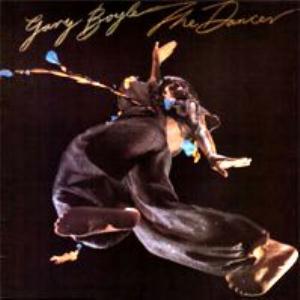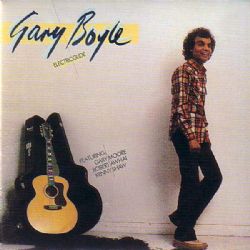Gary Boyle is a well-known British jazz-rock guitarist who first appeared alongside Hammond wizard Brian Auger in the last days of the Trinity line-up. However, I guess that most people know him from his own jazz-rock band Isotope with which he recorded three albums: Isotope (1974), Illusion (1975) and Deep End (1976), all reviewed by Background Magazine. At the time I wrote (see review): 'people who enjoy strong instrumental jazz-rock with fine soloing on the guitars and the keyboards must certainly try out these three albums by Isotope. If you like the music of the bands mentioned in this review you'll like the music created by one of England's most dynamic jazz-rock outfits as well.' Well, that indicated that I liked them a lot. After Isotope disbanded, Gary Boyle started in 1977 a jazz-fusion solo career. This resulted in the well-esteemed album The Dancer (1977) and its follow-up Electric Glide (1978). However, I never got the chance to listen to these albums and I was always curious to know how Gary Boyle had continued after the split of Isotope. Well, lucky for me Esoteric Recordings, that also recently reissued the Isotope-albums, re-released both solo efforts. Now I finally got the opportunity to check them out. Both albums contain more than half an hour of musical enjoyment and have no bonus tracks at all. Music wise both albums are quite different. The Dancer can be regarded as a kind of funky-disco influenced album. During the release this type of music became very popular. In 1977 the movie Saturday Night Fever was a blockbuster mainly due to the music released by the Bee Gees. I'm not sure if it had influenced Gary Boyle's music; maybe not that much because the music on this album can certainly not be labelled as Saturday Night Fever II. However, the album can be seen as a kind of follow-up to the latest Isotope-album. That's not so strange if you know that Robin Lumley produced both albums. At the time this keyboardist played in Brand X. This mostly explains that great parts contain hints of this band and related acts like Return To Forever and Weather Report. Some of the songs are very much related to fusion or jazz-rock. This also explains why Rod Argent plays an excellent Moog-solo on the opening piece. He and his band Argent were influenced as well by these musical styles. The same track also includes some excellent drum playing by Simon Phillips. His fantastic technique can be enjoyed on more tracks. The bass parts are done by Doni Harvey. Together with Steve Shone he's responsible for some strong bass playing on this release, sometimes fretless and sometimes even slapping. Producer Robin Lumley can be heard on the electric piano, but throughout the album the most excellent keyboard work comes from Zoe Kronberger and Dave McCrae. Mr. Boyle is not only a wonderful performer on the electric guitar. On Lullaby For A Sleepy Dormouse he also showed how good he can handle the acoustic guitar. The final piece Maiden Voyage is a sort of tribute to his old friend Brain Auger. On this piece written by Herbie Hancock Auger shows once again how talented he was on the acoustic and electric guitars. In 1978 Gary Boyle returned with a much more consistent and convincing album. Electric Glide has a very impressive line-up including drummer Simon Phillips, guitarist Gary Moore − then still in Colosseum II − bassist John Giblin and for two acoustic track guitarist Kenny Shaw. Traces of funk are still present as you can hear on the opener Snap Crackle and the title track, but less dominant than on The Dancer. Moore's presence on three tracks made me sometimes think of the wonderful albums he made with Colosseum II with the same kind of fusion and jazz-rock type of guitar playing. The album seems to be recorded in three sessions. The first one having Boyle and Shaw on acoustic guitars on the tracks Morning Father Joys and Brat No 2, both relaxing pieces of music written by Shaw. The second session featured the all-star line-up of Moore, Phillips and Giblin. And the third session varies from a trio to a sextet for the remainder of the album. You can say that Electric Glide is a guitar-dominated fusion album, because the keyboards played by Pete Jacobson can only be heard on two tracks. Neither The Dancer nor Electric Glide is an essential fusion albums. At the time the music on both releases wasn't groundbreaking at all; they weren't even adventurous records. However, I'm sure that many lovers of progressive rock music will love this type of music. If only because of the excellent playing of musicians like Simon Phillips, John Giblin, Gary Moore, Rod Argent, and of course Gary Boyle. *** Henri Strik (edited by Peter Willemsen) Where to buy? |

